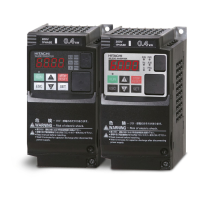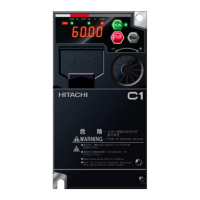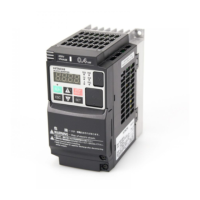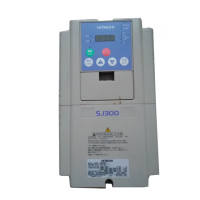Page 23
REDUCED LOAD SWING
In traverse applications it is possible to reduce the chance of load swing by configuring the VFD for sensorless vector control and
using the torque limits to help reduce starting load swing. Also, you will use the alternate acceleration and deceleration functions to
reduce load swing when accelerating and decelerating to and from high speeds.
In order to configure the torque limits correctly you will need to lift 100% of the rated load.
Torque Limit Configuration
1 Lift 100% of the rated load off the ground.
2 Navigate to parameter d012 on the traverse VFD that you are configuring. This is the output torque monitor.
3
Operate the traverse motion in low speed in any direction and wait for the torque monitor to stabilize. Write down
that value.
4
Operate the traverse motion in high speed in any direction and wait for the torque monitor to stabilize. Write down
that value.
5
Using the largest value that was monitored in either step 3 or step 4,
set parameters b041, b042, b043, b044 to that value.
6
The Torque limits have now been set to the required amount of torque to move 100% load. Verify operation to make
sure the traverse motion can still properly move the load. If the load fails to move increment the values by 1 in
parameters b041, b042, b043, b044 until the load moves properly.
Accel / Decel with ALT Accel & Decel Configuration
The acceleration and deceleration times are examples and can be modified to the specific application. The values in parameters
F002 and F003 should be double then what is in parameters A092 and A093.
1
Navigate to parameter F002 and set it to 9.00 seconds. This is acceleration time (1) and will be used when
accelerating from 0hz to 1
st
2
Navigate to parameter F003 and set it to 9.00 seconds. This is deceleration time (1) and will be used when
decelerating to 0hz from 1
st
3
Navigate to parameter A092 and set it to 4.50 seconds. This is acceleration time (2) and will be used when
accelerating from 1
st
/ low-speed to high-speed or anything greater low-speed.
4
Navigate to parameter A093 and set it to 4.50 seconds. This is deceleration time (2) and will be used when
decelerating to 1
st
/ low-speed from high-speed or anything greater that low-speed.
5
Navigate to parameter A094 and set it to “01” : transition frequency. This will enable the alternate acceleration and
deceleration change over based on transition frequency A095/A096.
6
Navigate to parameter A095 and set it to 1.00 Hz over the low-speed frequency. This is the frequency in which the
acceleration will switch from acceleration time (1) to acceleration time (2).
st
/ low-speed frequency = 15.00hz then set A095 = 16.00hz
7
Navigate to parameter A096 and set it to 1.00 Hz over the low-speed frequency. This is the frequency in which the
deceleration will switch from deceleration time (1) to deceleration time (2).
st
/ low-speed frequency = 15.00hz then set A096 = 16.00hz
Once everything is configured correctly test the traverse motion for proper operation. If the acceleration or decelerations times are
too long for the application, then reduce the required times.
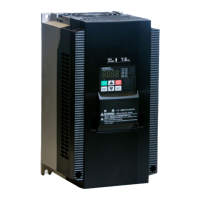
